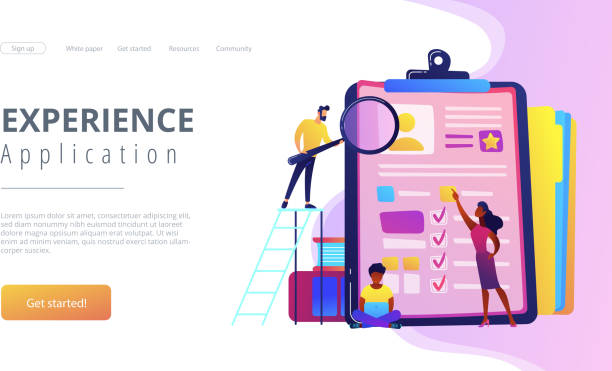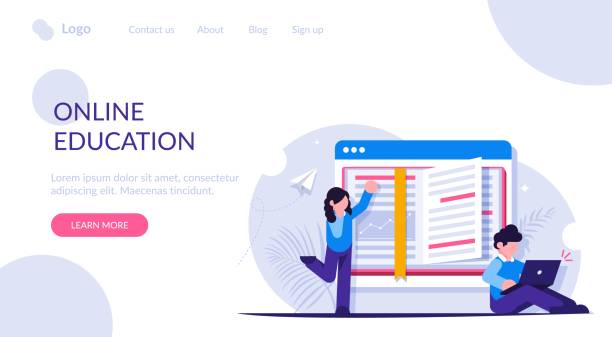The Importance of Secure Website Design in the Digital Age

In today’s world, where the internet has become an inseparable part of daily life, secure website design is no longer an option, but a vital necessity.
From small businesses to large corporations, all require a reliable online platform to protect sensitive customer information and their data against cyber threats.
#Web_security is not just about preventing unauthorized access, but also includes maintaining data integrity, service availability, and protecting user privacy.
An insecure website can lead to loss of customer trust, heavy legal penalties, and irreparable damage to brand reputation.
For this reason, from the very initial stages of #web_development, the principles of secure website design must be prioritized.
This chapter descriptively and instructively shows you why a preventive approach to web security is more important than ever and how it can be the foundation of a successful online presence.
Without adhering to these principles, any effort to build an efficient website will be at serious risk.
From access to banking information to personal data, any security breach can have widespread consequences.
Did you know that poor online store design can drive away up to 70% of your potential customers? Rasaweb revolutionizes your sales with professional and user-friendly e-commerce website designs.
✅ Significant increase in sales and revenue
✅ Full optimization for search engines and mobile
⚡ [Get free consultation from Rasaweb]
Understanding Common Threats in Web Security

To achieve secure website design, we must first become familiar with common types of cyber threats.
These threats can range from simple to highly complex attacks, each requiring specific countermeasures.
One of the most common attacks is SQL Injection, where an attacker injects malicious SQL code into website inputs, gaining the ability to access or modify database data.
Another type is Cross-Site Scripting (XSS), where an attacker injects malicious scripts into legitimate web pages, often aiming to steal user information or redirect users to fake websites.
Distributed Denial of Service (DDoS) attacks also lead to website service disruption by sending a massive volume of traffic to the server.
This section expertly and analytically describes these attacks and other threats such as Brute Force attacks, phishing, and file injection, and provides general strategies to counter them.
A deep understanding of these threats is the first step towards securing a website and implementing appropriate defensive mechanisms.
Furthermore, examining software vulnerabilities and insecure protocols are among the issues that should be considered in this area.
Best Practices in Secure Coding and Implementations

At the heart of secure website design is secure coding and adherence to defensive programming principles.
This section guides and educates programmers to mitigate vulnerabilities from the outset.
One of the most important principles is Input Validation.
All data received from the user, including form fields, URL parameters, or cookies, must be carefully checked and filtered to prevent the injection of malicious code.
Using Prepared Statements and parameterization for database queries is the best defense against SQL Injection.
Additionally, for password management, instead of direct storage, strong hashing functions (such as Bcrypt or Argon2) should be used along with salt.
Proper Session Management, including the generation of unique session IDs, the use of SSL/TLS for session transmission, and appropriate session expiration, is crucial.
Below is a checklist of important measures for ensuring secure website design and development vulnerabilities and their prevention methods:
| Vulnerability | Description | Prevention Solution |
|---|---|---|
| SQL Injection | Injecting malicious code into the database via user inputs. | Using Prepared Statements and ORM, input validation. |
| Cross-Site Scripting (XSS) | Injecting malicious scripts into users’ browsers. | Filtering and Escaping outputs, using Content Security Policy (CSP). |
| Cross-Site Request Forgery (CSRF) | Executing unwanted commands in the browser of an authenticated user. | Using CSRF tokens, checking Origin and Referer. |
| Broken Authentication and Session Management | Defects in authentication and session management. | Implementing Multi-Factor Authentication (MFA), using encryption for cookies. |
Furthermore, in secure website configuration, you must ensure that all system errors are not publicly displayed and do not reveal sensitive information.
Using the OWASP Top 10 as a reference can be a comprehensive guide for identifying and resolving common vulnerabilities.
The Importance of SSL/TLS Certificates in Communication Security

One of the main pillars of secure website design is the use of SSL/TLS encryption protocols.
These certificates ensure that communication between the user’s browser and the website server is encrypted and secure, preventing eavesdropping or data tampering by attackers.
When a website uses HTTPS (the secure version of HTTP), a green padlock appears in the browser’s address bar, indicating a secure connection and reassuring users.
Otherwise, browsers typically display a “Not Secure” warning, which can undermine user trust.
This section analytically and descriptively examines the types of SSL/TLS certificates (such as Domain Validation, Organization Validation, Extended Validation), their operation, and the importance of regularly updating them.
Proper SSL/TLS installation and configuration are not only essential for communication security but also positively impact website SEO, as search engines rank HTTPS-enabled websites higher.
For a secure internet site, this is indispensable.
Are you frustrated with your online store’s low conversion rate?
Rasaweb, with its professional e-commerce website design, is your definitive solution!
✅ Increase your sales and revenue
✅ Unparalleled user experience for your customers
⚡ Get a free consultation now!
Server and Infrastructure Security in Secure Website Design

Secure website design is not limited to coding but also includes securing the server and its infrastructure.
The website hosting server must be properly configured and protected to remain safe from potential attacks.
Installing hardware and software firewalls to control incoming and outgoing traffic is the first step in this direction.
Furthermore, regular updates of the server’s operating system, web server software (such as Apache or Nginx), and utilized software packages are crucial for addressing known security vulnerabilities.
Using strong and unique passwords for server access and restricting access based on the principle of least privilege are other important principles.
Unnecessary ports should be closed, and unwanted services should be deactivated.
This section also guides on the importance of regular server log monitoring for identifying suspicious activities and implementing Intrusion Detection Systems (IDS) and Intrusion Prevention Systems (IPS).
Server security is an integral part of a comprehensive strategy for secure website design and implementation and ensures that even if there are potential code weaknesses, additional layers of defense are in place.
The Evolving Landscape of Cyber Threats and the Need for Continuous Vigilance

The world of cybersecurity is a dynamic battlefield where threats are constantly changing and evolving.
What seems sufficient for secure website design today might become obsolete tomorrow.
This section, in a news-like and thought-provoking manner, addresses new challenges in web security.
The emergence of AI and machine learning-based attacks, Supply Chain attacks, and the rise of more sophisticated phishing attacks have made the need for constant vigilance and continuous updating of knowledge and security systems more critical than ever.
Can we always stay one step ahead of attackers? How can we prepare ourselves for threats that are not yet known? This section not only points to the latest trends in security threats but also emphasizes the importance of continuous training for development and security teams, as well as conducting regular Penetration Testing, to identify and fix vulnerabilities before they are discovered by attackers.
A proactive approach is key to confronting this evolving landscape, ensuring a secure website remains so always.
Database Security in a Secure Website

The database is the heart of every website and is responsible for storing sensitive and vital information.
Therefore, ensuring database security is an integral part of secure website design.
This section expertly guides on various methods of protecting data in the database.
The first step is encrypting sensitive data, both in transit and at rest.
Also, applying the principle of Least Privilege for user access to the database is very important; meaning each user or service should only have access to the minimum information and operations necessary to perform their task.
Below is a checklist of important measures for ensuring database security:
| Security Measure | Description |
|---|---|
| Data Encryption | Encrypting sensitive information in the database and during transit. |
| Granular Access Control | Applying the principle of least privilege for users and services accessing the database. |
| Using a Database Firewall | Protecting the database against network attacks and SQL injection. |
| Regular Backups | Creating regular and secure backups of the database and testing their restoration. |
| Limit Login Attempts | To prevent Brute Force attacks on the database. |
| Remove Default Accounts | Deleting or changing passwords for default database user accounts. |
Furthermore, regular backups of the database and storing them in a secure and separate location are crucial for data recovery in case of unforeseen incidents such as data loss or ransomware attacks.
Also, monitoring database activities to identify suspicious patterns or intrusion attempts can help expedite the response to threats.
These measures combined contribute to a secure and reliable website.
User Authentication and Authorization in a Secure Website

User authentication and authorization systems are the main gateways to access website information and functionalities, and weaknesses in them can completely undermine secure website design.
This section descriptively addresses the importance of implementing strong mechanisms for this purpose.
Multi-Factor Authentication (MFA), which combines something you know (password), something you have (mobile phone or token), and/or something you are (fingerprint), significantly enhances the security of user accounts.
Strong policies for password selection and updates, such as requiring a combination of uppercase and lowercase letters, numbers, and special characters, and preventing the reuse of old passwords, are essential.
Furthermore, proper Session Management, including the use of unpredictable session IDs, encryption of session cookies, and automatic session expiration after a specified period of inactivity, is crucial to prevent Session Hijacking attacks.
Implementing appropriate mechanisms for forgotten password management and preventing Brute Force attacks (such as limiting login attempts) are other important considerations in website security.
Did you know that customers’ first impression of your company is your website? Multiply your business’s credibility with a powerful corporate website from Rasaweb!
✅ Exclusive and eye-catching design tailored to your brand
✅ Improved user experience and increased customer attraction
⚡ Get a free consultation!
Practical Tips for Users in Identifying Secure Websites

Alongside developers’ efforts for secure website design, users also play a crucial role in maintaining their online security.
This section provides practical and engaging tips to help users identify secure websites and protect their personal information.
Always look for the green padlock or “HTTPS” in the browser’s address bar; this indicates that your connection to the site is encrypted.
Be wary of phishing emails and messages that redirect you to fake websites; always carefully check the URL to ensure you are entering the legitimate site.
Using strong and unique passwords for each user account and enabling Two-Factor Authentication wherever possible are among the vital measures.
Furthermore, you should avoid clicking on suspicious links or downloading files from unknown sources.
Installing a strong antivirus and firewall on your personal computer and keeping them updated provides additional layers of defense.
Awareness of these tips helps users play a more active role in the path of safe internet usage and protect themselves against cyberattacks.
The Future of Secure Website Design and Upcoming Challenges

As technology advances, the challenges of secure website design also become more complex.
This section analytically and descriptively addresses the future of web security and emerging trends in this field.
One of the most important trends is the use of Artificial Intelligence and Machine Learning (AI/ML) in threat detection and prevention.
These technologies can identify suspicious patterns with greater speed and accuracy and initiate automated responses.
Furthermore, Blockchain technology and its applications in increasing data transparency and security, as well as decentralized authentication, have great potential to change the face of web security.
However, with the growth of these technologies, attackers will also develop new and more sophisticated methods to circumvent security systems.
The main challenge in the future will be maintaining a balance between security, usability, and efficiency.
Investment in research and development, continuous training of security professionals, and international cooperation to combat cross-border threats are among the necessities for achieving a completely secure website and a safer online environment.
This path is an endless journey, but with a smart and forward-thinking approach, we can shape a safer future for the internet.
Frequently Asked Questions
| No. | Question | Answer |
|---|---|---|
| 1 | What is secure website design? | The process of designing and developing websites that are resistant to cyberattacks and protect user data and privacy. |
| 2 | Why is website security important? | To prevent data breaches, financial losses, damage to company reputation, and maintain user trust. |
| 3 | What are some common website security threats? | SQL Injection, XSS (Cross-Site Scripting), CSRF (Cross-Site Request Forgery), weak authentication, and outdated software. |
| 4 | What is SSL/TLS and what is its role? | Protocols for encrypting data between the user’s browser and the website server, ensuring secure and private communication. |
| 5 | How can SQL Injection attacks be prevented? | By using Prepared Statements/Parameterized Queries, input validation, and ORMs (Object-Relational Mappers). |
| 6 | What is the role of a Web Application Firewall (WAF) in security? | A WAF monitors and filters HTTP traffic between a web application and the internet to prevent malicious attacks. |
| 7 | Why are regular updates of software and libraries essential? | Updates include patches for known security vulnerabilities that attackers can exploit. |
| 8 | How can XSS attacks be prevented? | By sanitizing and escaping all user inputs before displaying them on the web page and using Content Security Policy (CSP). |
| 9 | What does the Principle of Least Privilege mean? | It means that users and systems are granted only the minimum necessary permissions to perform their tasks, preventing unnecessary access to resources. |
| 10 | What is the importance of proper user session management? | To prevent user sessions from being hijacked and unauthorized access to user accounts through secure and expiring session tokens. |
And other services by Rasaweb Advertising Agency in the field of advertising
Smart Digital Branding: A professional solution for online growth focusing on precise audience targeting.
Smart Customer Journey Map: An exclusive service for increasing website visits based on intelligent data analysis.
Smart Google Ads: Professional optimization for online growth using marketing automation.
Smart Direct Marketing: Revolutionize click-through rates with the help of attractive UI design.
Smart Custom Software: A combination of creativity and technology to boost sales through intelligent data analysis.
And over hundreds of other services in internet advertising, advertising consulting, and organizational solutions
Internet Advertising | Advertising Strategy | Advertorials
Resources
Website Security Tips
Website Speed and Performance Optimization
Professional Website Design Principles
SEO Guide for Website Improvement
? For your business’s leap in the digital world, Rasaweb Afarin is your partner. From modern UI website design to professional SEO optimization, we offer comprehensive solutions for your growth and visibility.
📍 Tehran, Mirdamad Street, Next to Central Bank, Southern Kazeroun Alley, Ramin Alley, No. 6


